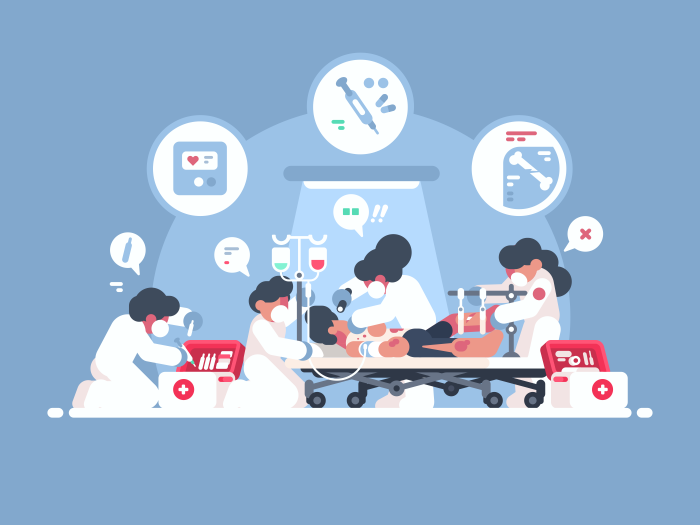Blue collar workers. White collar employees. Heck, even the no-collar types can benefit from a few workplace safety tips.
It doesn’t matter where you work, or even what your day-to-day tasks are. According to a recent report from the U.S. Occupational Safety & Health Administration (OSHA), there are more than 5,000 hospitalization reports every year from employers. Throw in a few thousand amputation reports, many from manufacturing facilities (that’s a lot of lost digits to make a few widgets), and it’s clear that workplace safety is as paramount as ever.
Here are six workplace safety tips that will help you and your co-workers stay away from those OSHA accident reports:
Navigate the article
#1 Know Where First Aid Stations are Located
#2 Don’t Ignore Obvious Safety Hazards
That little piece of rug, just begging to trip someone. A light fixture that looks like it could fall. A spill on the cafeteria floor. If you see something that might result in an injury (even a minor one), report it to your safety supervisor at once – or better yet, take care of it yourself. Your co-workers will thank you. Sometimes, the best safety practices are the ones that eliminate hazards from becoming serious in the first place. Take this tip to heart – become pro-active with safety, starting with you!
#3 Keep Up-To-Date on OSHA Standards
The U.S. Occupational Safety & Health Administration (OSHA) is one of those organizations that everyone knows about. But few know what they actually do. OSHA is responsible for workplace safety in a variety of aspects – accident investigation, safety standards, audits, enforcement, public awareness, and much more. Regardless of where you work in the U.S., OSHA regulations apply. Check out their website for announcements, statistics, safety tips, and more.
#4 Keep Stress to a Minimum
Workplace stress equals workplace accidents. Long hours, endless overtime, and a frantic work pace eventually take their toll. And once fatigue sets in (and other negative side effects from stress), accidents are bound to happen. Some of the best ways to eliminate added stress include taking walks, taking a true lunch break, improving your workday diet, and more.
#5 Dress for the Occasion
If you work outside, make sure your garb matches the moment. Wintry weather demands extra layers of clothes, heavy duty gloves, hard warmers, waterproof boots, and other clothing & equipment. For employees with added build-in hazards (think construction workers, aerial lift operators, etc.), staying comfortable in an important consideration – try to balance the needs to stay warm with flexibility requirements.
#6 Pay Attention to Power
From outlets to power lines, you should always be aware of electrical hazards on the job. While most electrocutions occur in industries like mining, agriculture, forestry, and other business sectors, while-collar hazards also exist. If you see any electrical hazards, report it immediately to your supervisor or site safety coordinator.
#7 About the Author
Tom Wilkerson knows a thing or two about workplace safety. His company, AerialLiftCertification.com, specializes in OSHA training for aerial lift operators in construction, utilities, and other sectors. Mr. Wilkerson’s experience as a worker, supervisor, and training coordinator give him a unique perspective of workplace safety from multiple vantage points, which creates added value for all his training courses.
This post was created with our nice and easy submission form. Create your post!







